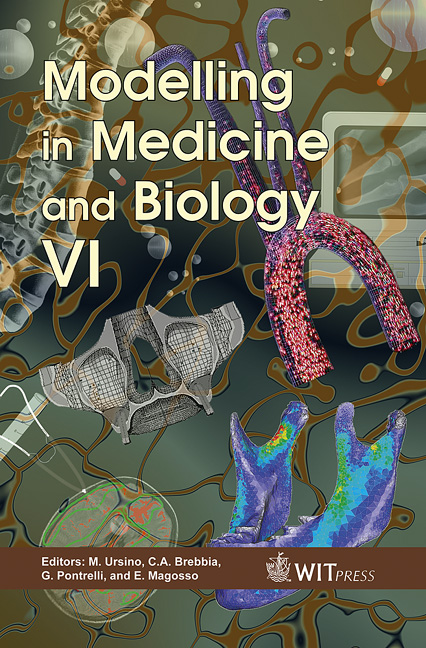Dental Pulp Responses To Biphasic Calcium Phosphate Cement Containing Buffer Solution In The Liquid Phase
Price
Free (open access)
Transaction
Volume
8
Pages
10
Published
2005
Size
3,054 kb
Paper DOI
10.2495/BIO050481
Copyright
WIT Press
Author(s)
M. Yoshikawa & T. Toda
Abstract
We developed a novel biphasic calcium phosphate cement of dibasic calcium phosphate dihydrate and tetracalcium phosphate as a root canal filling material. For endodontic clinical use, the physical properties and tissue responses were estimated. The pH level ranged from 8.2 to 8.6. Low crystalline hydroxyapatite was recognized by XRD analysis. Mutually connected platy particles and spherical particles were observed by SEM examination. The particles were separated from each other by about 10 µm. Dental pulp responses to the cement was estimated in mandibular first molar in vivo. Hard tissue was formed in the middle of root canal by placement of the cement on the amputated pulp at the orifice. When the cement was placed on the pulp amputated at the middle in the root canal, cementum-like hard tissue was formed at the apex. Pulp amputation and placement of the cement at the apical portion, mild inflammatory responses to the cement were found in the periapical area. The cement in the alveolar bone defect via the root canal promoted the reconstruction of periapical alveolar bone defect. It is concluded that the cement is suitable for endodontic bioactive material because of hard tissue inductiveness. Keywords: calcium phosphate cement, dental pulp, hard tissue formation. 1 Introduction It is known that dental pulp tissue (pulp) is surrounded by hard tissue of dentine. Moreover the dentine of the coronal portion is covered with enamel, and dentine of the tooth root is covered with cementum. Hard tissue defect caused by injury or dental caries is restored with resin or metals. Pulp is often exposed in the oral environment due to tooth fracture or dental caries. Pulp is immature, and shows
Keywords
calcium phosphate cement, dental pulp, hard tissue formation.





